My husband and I began our home-building journey in June 2019 when we bought a piece of property in Bend, Oregon. If you’d read the announcement of us becoming landowners, you probably thought, Wow, they got really lucky!
And luck did play a part in that, though it took a lot of legwork to get to that point.
Before I delve into the design and construction of our home in real time, I thought it would be fun to catch you up on how we started looking for land, and why we ended up with a teardown instead of an open plot of land to build on.
Let’s go back in time to 2017, the year we moved to Central Oregon. (Yes, it took two years before we found our property, so don’t give up if you’re in the same boat!)
We’d been working with a real estate agent from afar to search for houses, and even made a trip to Bend to look at some listings, but nothing ever grabbed us enough to say, This is it! and prompt us to make a major purchase without really knowing the area.
Related: My 14 Most-Asked Questions After 5 Years of Living in Central Oregon
Shortly after we moved (into a rental) and did a few disappointing drive-bys past potential homes, Will and I were ready to take a leap of faith. We felt that building—instead of buying—a house could possibly be the right path for us.
But land in Bend can be quite expensive, as the city doesn’t have a limitless supply of land available to build on. (We’re bounded by the Cascade Range on one side and National Forest on the other.)
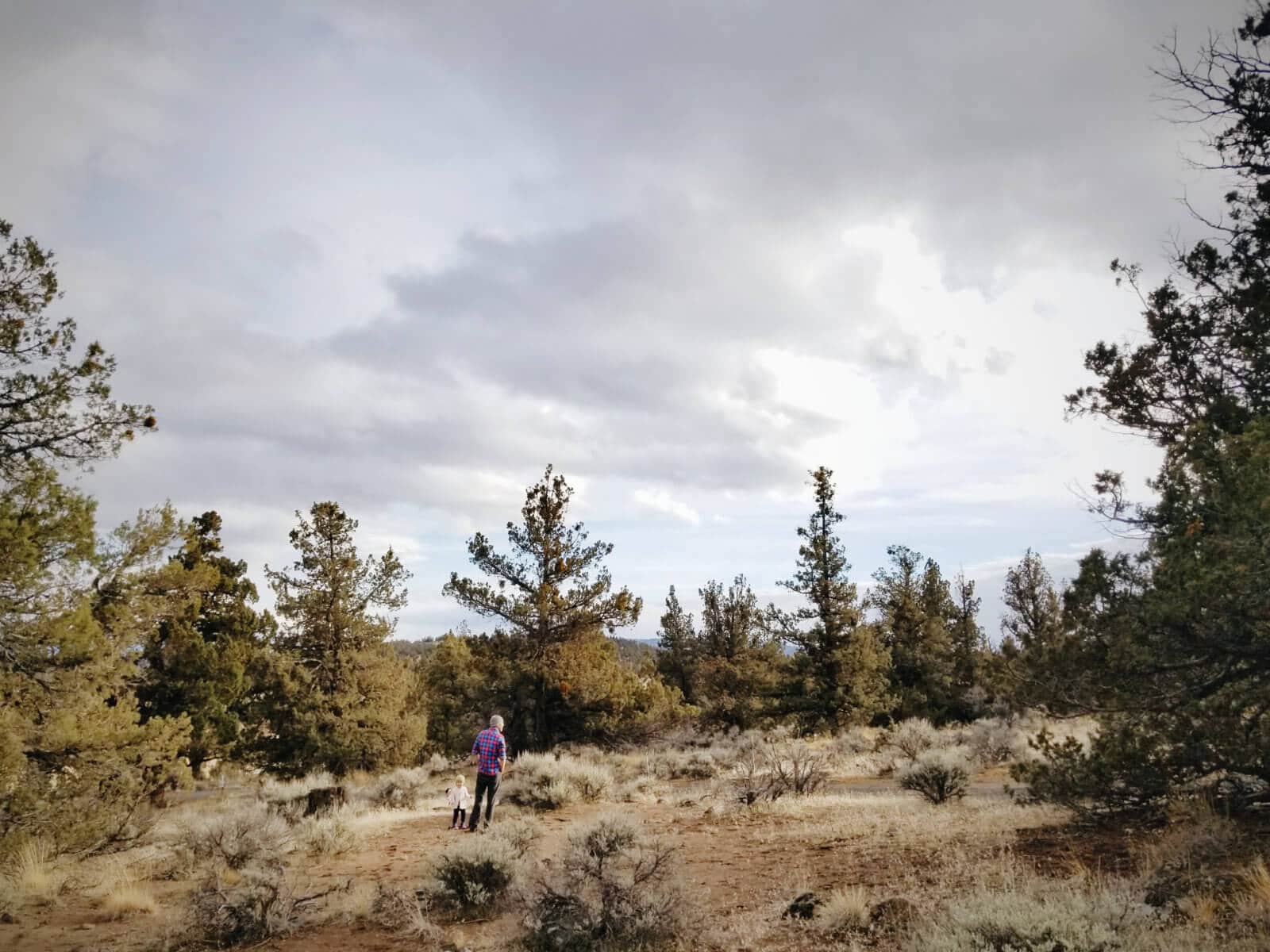
Many people end up buying and tearing down older manufactured homes. Whatever land is left is either small and tricky to develop (steep hillside lots or flat land littered with lava), or much too expensive to build on (raw land on large acreage, or master-planned lots in luxury golf course communities).
We were working against a modest budget and a house lease that was ending soon, so we had to get creative with our search.
This is exactly what we did to find land to build on, and maybe these six tips could help you, too, if you want to buy land one day for building your dream home.
1. Narrow down our target neighborhoods.
In the same way that people focus on certain neighborhoods and amenities when they look for a house, we had a list of must-haves when looking for land.
We wanted a quiet, friendly neighborhood that we loved and could see ourselves living in for a very long time, where neighbors weren’t stacked on top of each other but there was still a strong sense of community.
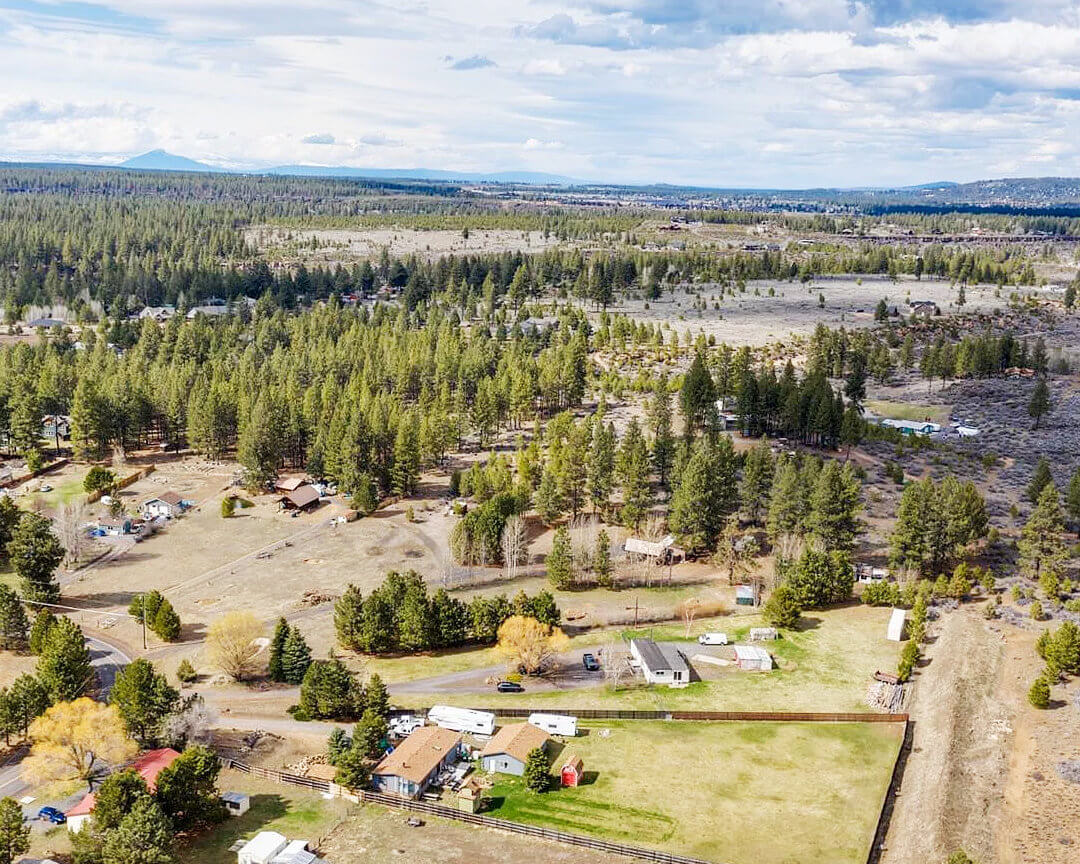
We wanted at least an acre of flat land, plenty of open space for gardening and playing, utilities available at the lot line, good southern orientation, and pretty views. Having a few mature trees would be nice (for privacy, aesthetics, and treehouse-building), but not too many trees, as they would make excavating more complicated.
And lastly, we wanted to be within a 15-minute drive from downtown or our favorite hiking and biking trails. Further down the list, having water rights or multi-use agricultural zoning would be a bonus.
2. Work with a real estate agent.
We gave this list to our agent, who sent us a new listing every time she found one that matched our needs. But with land, there just wasn’t much available in our price range, and a lot of land simply isn’t listed on the MLS.
Sometimes landowners list their land as FSBO (for sale by owner). Sometimes agents keep “pocket listings” that don’t go on the market but are shared only with other agents that might have the right buyers for them.
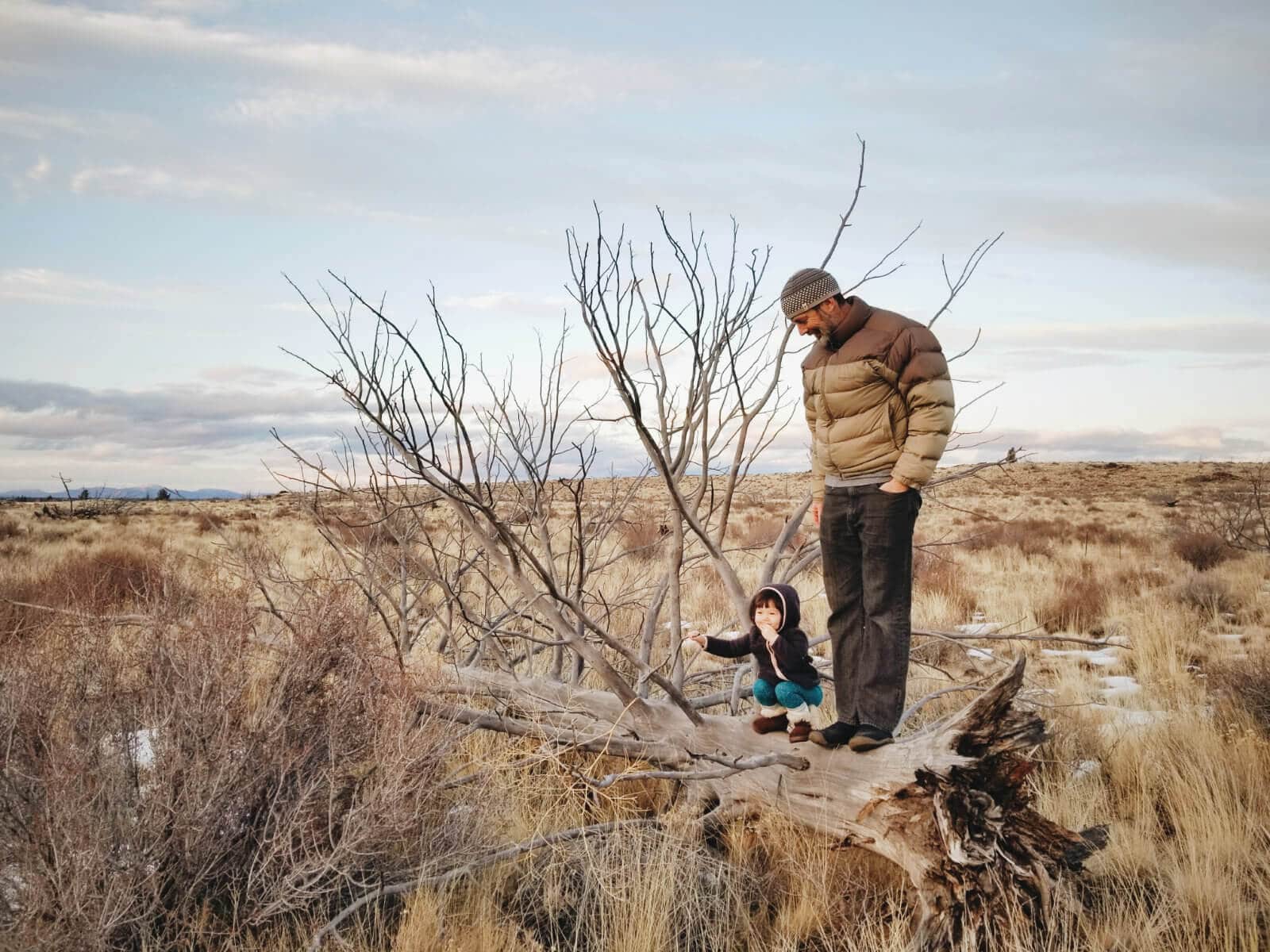
We realized that if we were serious about building sometime in the next year, we had to be proactive and not rely on any agent to bring us a listing.
One thing to note is if you’re looking to purchase acreage, a land broker is worth consulting. That type of real estate agent specializes in large tracts of undeveloped land (like farms and ranches) and would have more leads for those kinds of listings.
3. Scour Google Earth.
Will and I have an obsession with Google Earth. It’s how we find secret campsites, paths less traveled on our road trips, and hidden gems in our own neighborhood. It’s also how we initially found the neighborhood that we would eventually buy in.
We pulled up a satellite view of Bend and searched, street by street, for open parcels in our favorite parts of town. We also paid attention to areas that were exceptionally green in the middle of our high desert region, which indicated a possibility of water rights. (This is a unique deeded right that allows a landowner to use water from the canal—the river, essentially—to irrigate private land.)
Using a satellite map for our initial land search saved us a lot of driving time, because we could weed out potential lots based on their orientation, topography, and proximity to features we liked or didn’t like.
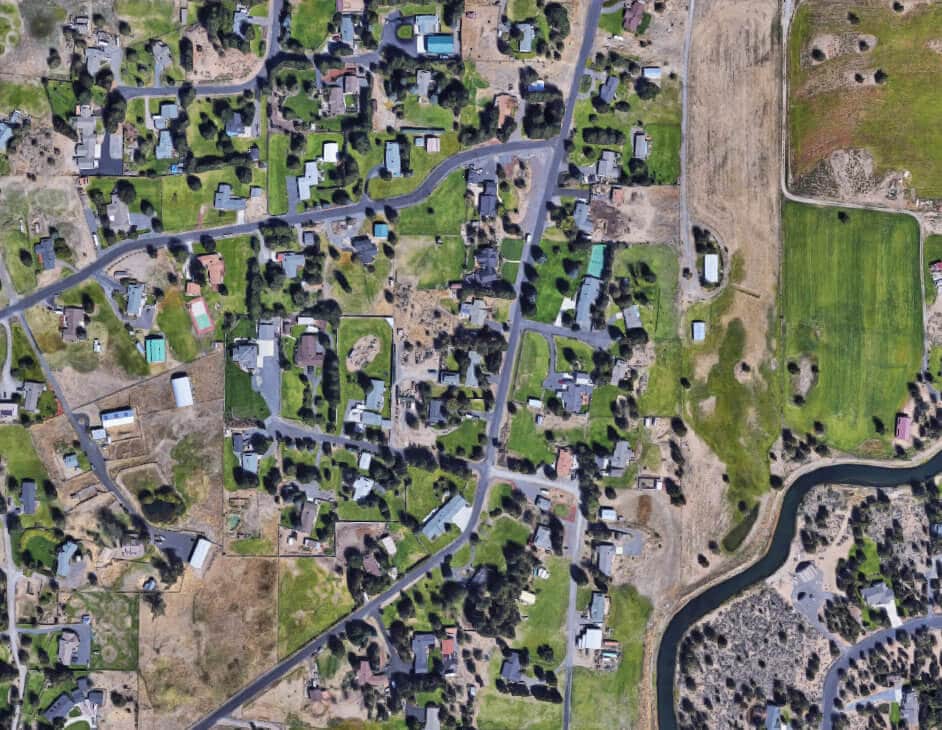
Armed with a little information from these aerial maps, we drove past the empty lots to see if any of them had signs in front and to get a feel for the neighborhoods.
We chatted with a few homeowners that we met while cruising their block, and left with a goldmine of local knowledge as far as how much snow they got on an average winter, how bad the smoke was during the last fire season, and how deep they had to dig their wells. (This last one actually deterred us from a plot when we found out the next-door neighbor had to dig down nearly 500 feet!)
We found that most people were extremely insightful and helpful when it came to learning more about their neighborhood (especially if they feel you’re going to be a good neighbor to have). A lot of the old-timers also had wonderful stories to share about the history of the land we were looking at.
The great thing about Google Earth—that you can’t get from simply visiting properties in person—is that you get to spy on the neighboring houses and more importantly, their backyards.
Most of the neighborhoods we liked had no homeowners’ associations, which meant some of the homes had tons of project cars outside or looked like perpetual construction sites. These were things we didn’t particularly want to live next to, so we kept these considerations in mind as we drove around.
4. Track down information from the county assessor’s office.
For the lots that didn’t have signs, we wrote down their addresses and looked them up on our local assessor’s website. (Just Google “[Your city or county] assessor’s office” to access the local property assessor’s online database.)
You can also call your assessor’s office or visit their office in person to get public property information, such as the owner’s name and address, how the land is zoned, what the market value is, and whether it has a septic feasibility study or any previous permits on file.
You can then contact the owners by mail to find out if they’re willing to sell or subdivide the land. (You just never know unless you ask!)

We also looked up all of the surrounding properties to see if any of them had the same owners, as sometimes they’re more amenable to selling if they already own a house on the street (and aren’t holding on to land for their retirement home, for example).
I must have spent at least an hour each day, every day, poring over the information on the county assessor’s site. I researched the type of septic system the neighbors were approved for, how much the land was valued at year over year, and what other similar homes were valued at.
I made multiple calls to our county building department to clarify the information online and make sure the lots we were looking at were actually buildable. (One of the riverfront parcels we liked was in a floodplain, which highly restricted where we could place a house.)
We found out so much on our own that when it came time to do our due diligence during escrow, we were able to close very quickly. We’d done all of our homework before we made an offer, so there were no surprises!
5. Tell everyone—and I mean everyone—we were looking for land.
We told all of our friends and our friends’ friends that we wanted to build a house. I told my hairstylist, my dental hygienist, and my mom friends that we were looking to buy land.
In fact, it was at a kids’ party that we told another mom—who happened to be a real estate agent—that we’d been looking for land for several months, to no avail. She gave us one piece of advice that proved to be invaluable, and that was to stop looking for bare land, and to start looking for a tear-down.
This was because bare land came with a lot of bureaucratic red tape to begin building on, not to mention additional fees from the city. (It would’ve cost us $8,000 in “System Development Charges” alone—essentially a tax—if we’d decided to build on bare land!)
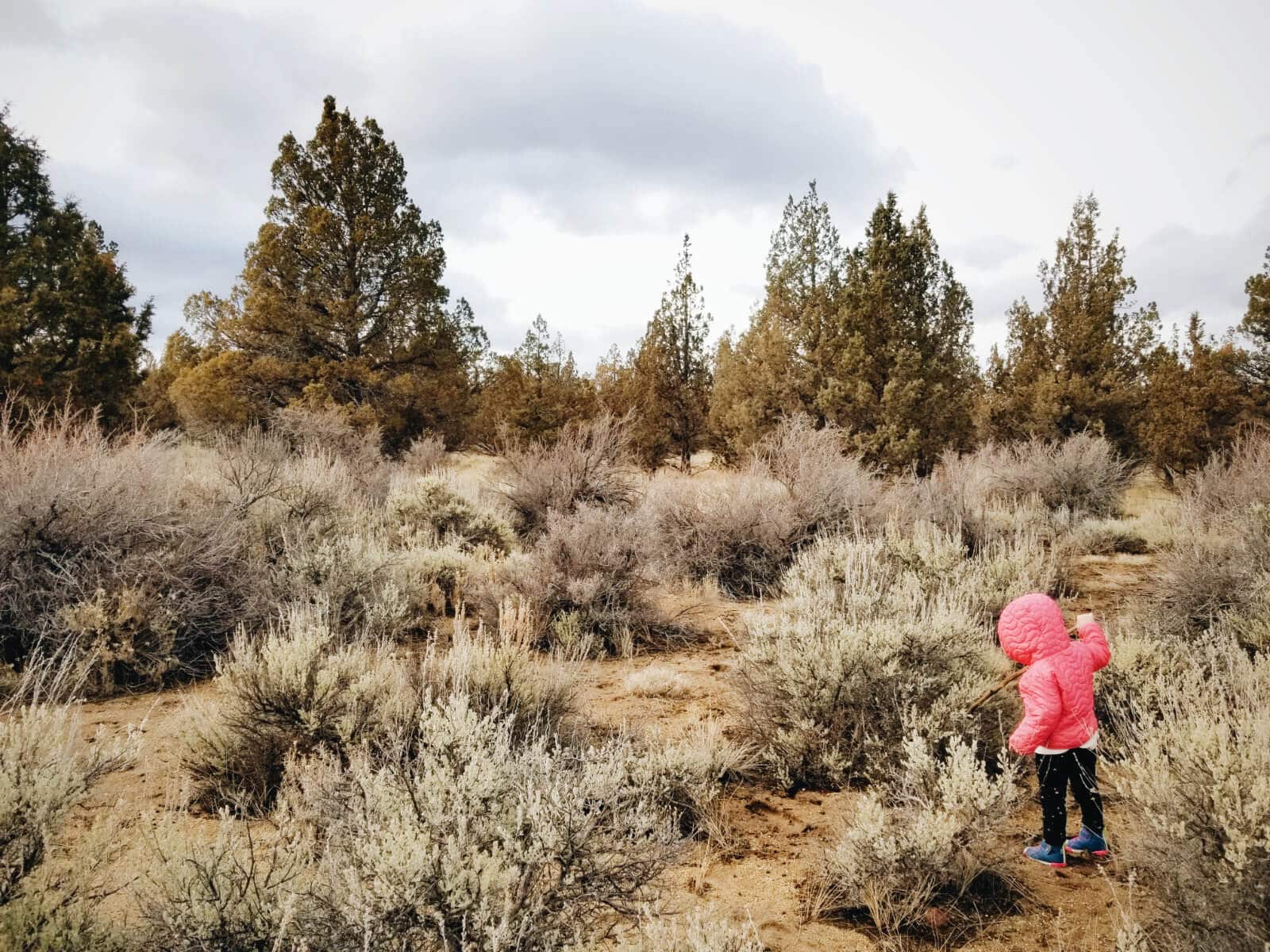
On the other hand, a teardown would already have utilities trenched and a driveway carved out (saving tens of thousands of dollars). If we found the right teardown, we could actually tear down all but one wall and call it a remodel, saving even more money in permits and other fees.
We’d originally shied away from teardowns, believing it would have been too expensive to buy a house just to get rid of it.
After all, we reasoned, a house has more value than empty land. We didn’t think we could afford an existing house on top of a new one built from scratch.
But after adding up all the fees associated with brand-new construction on unimproved land, we realized we’d come out ahead if we switched our focus to finding an old mobile home that was easy to remove.
I cannot stress enough how important it is to utilize your network (even if they aren’t related to real estate), as you never know who they might know, how they can help, or what little nugget of information they can give you that can save considerable time and money.
Once we adjusted our search filters from bare land to all properties—mainly manufactured homes built before 1990—it opened up a new world of possibilities.
(We chose to look at all properties because sometimes, there will be an old cabin, barn, or workshop/garage that’s still easy to tear down and/or makes it feasible for us to build elsewhere on the lot.)
6. Scour real estate listing sites like Zillow and Redfin.
After changing our search criteria on a couple real estate sites, we came up with a dozen more options that had potential.
We also tried searching through Craigslist and lesser-known listing sites like LandWatch, but we found that most of the properties listed were already on the MLS. Between Zillow and Redfin, we had plenty to look at.
I signed up for instant email notifications on Zillow, which alerted me of new listings that met my criteria as soon as they hit the market. (I also liked how Zillow showed FSBO listings that weren’t available on MLS-based sites.)
A few months after we decided to stop looking to let the market cool down, an email from Zillow landed in my inbox and our dream property totally ambushed us. Isn’t that how it usually works?!
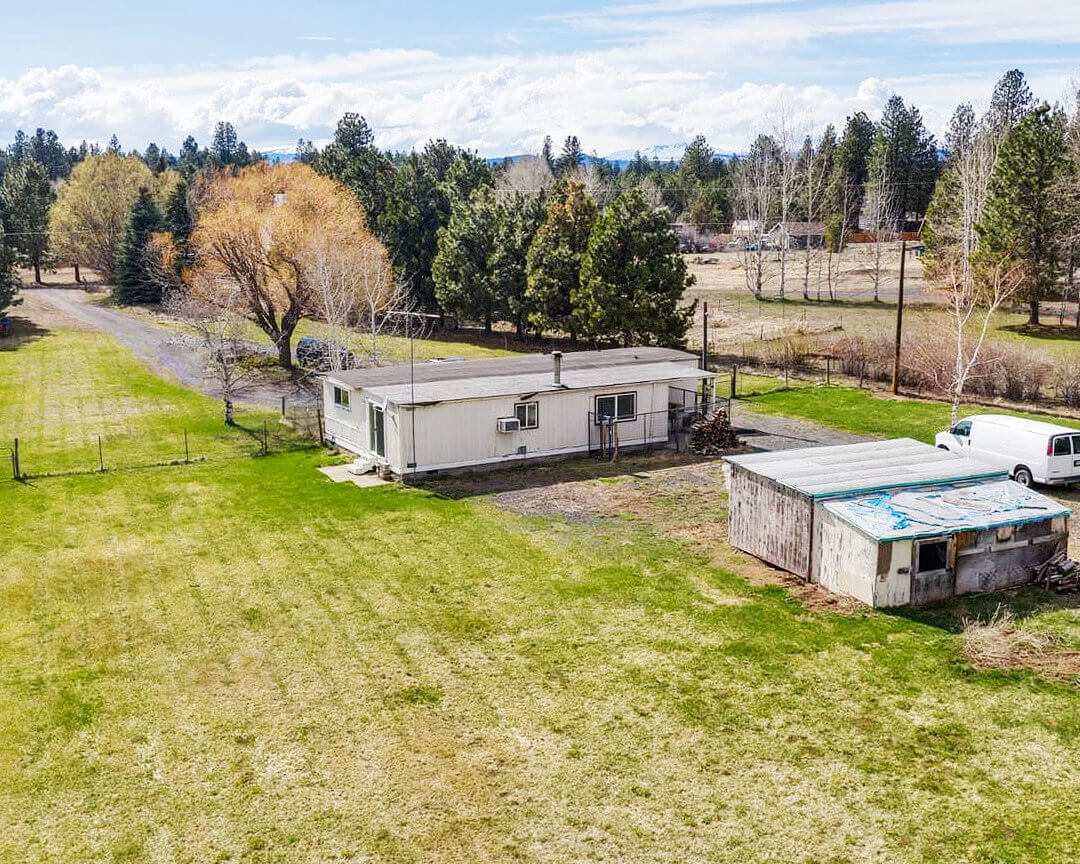
It was a teardown with a 1974 mobile home, a 300-foot driveway, and utilities already connected. The only drawback to the property was that the mobile home was sited exactly where we wanted to build, so we couldn’t live in it while we were building.
We also have to replace the ancient septic system, but I feel better knowing that we’ll be starting fresh with a brand-new tank, drain field, and leach lines.
Our county building department has been immensely helpful in laying out our next steps. I took all of their advice (and money-saving secrets!) plus our own experience with property hunting, and wrote a detailed guide on what you should know before buying land to build a house on.
Is there anything else you’re interested in learning about the process? Let me know and I’ll try my best to answer your questions as we move forward!
Follow along as Garden Betty Builds a House:
- And Just Like That, We Are Officially Landowners
- Why We Decided to Build a Custom Home
- Pre-Construction Progress: Septic Feasibility, House Plans, and Property Cleanup
- How We Found Land to Build On—and How You Can, Too
- A Surprise Move With a Silver Lining
- The Home Building Begins: A Recap of the Last 5 Years
- Demo Day: Tearing Down Our Old House
- What You Should Know Before Buying Land (My Real-Life Tips)
- Construction Loans: What I Wish I’d Known As a First-Time Borrower
- How to Get a Construction Loan While Being Self-Empoyed—My Experience
View the Web Story on how to find land to build on.


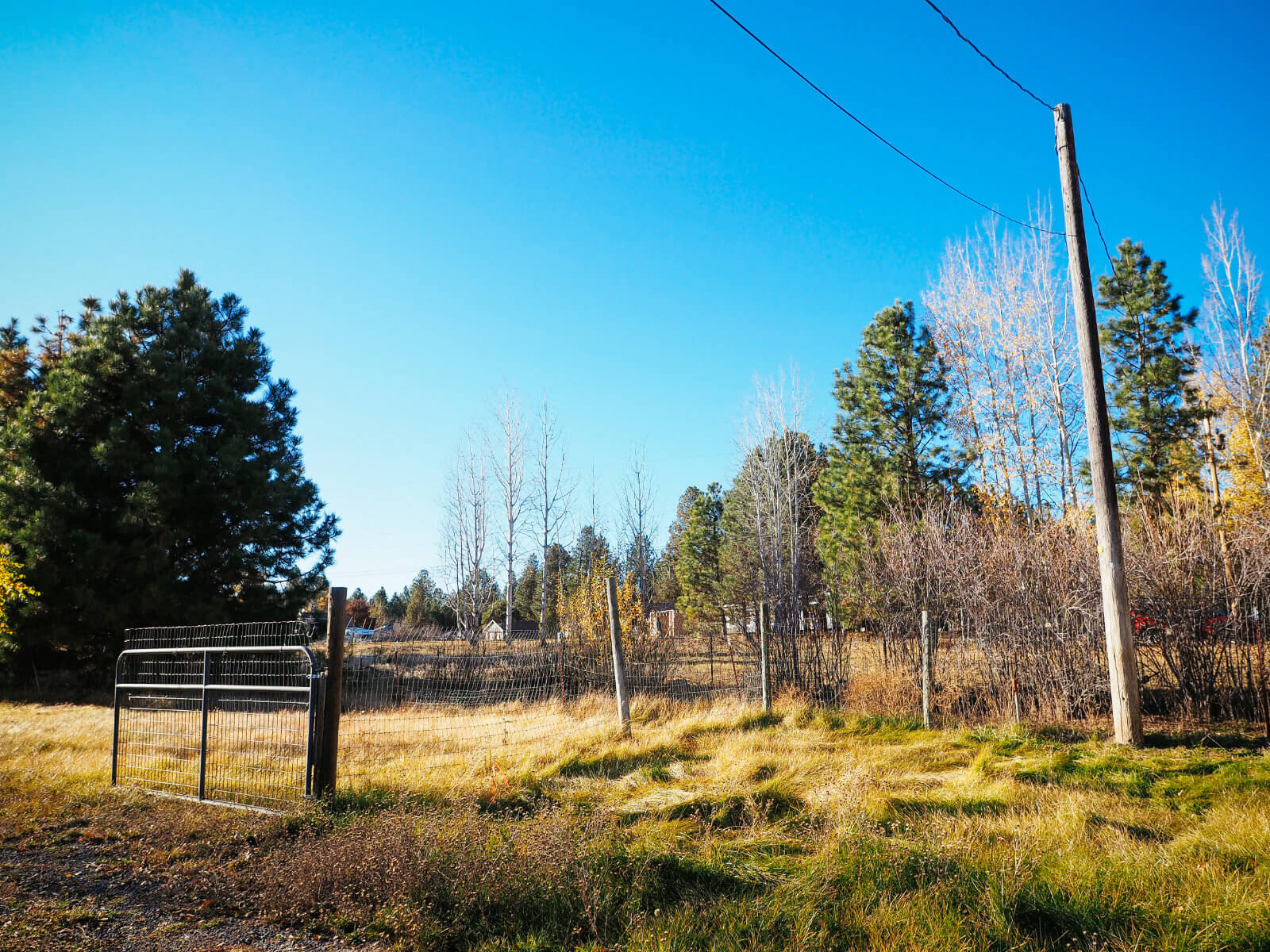













I am in the exact same boat and have been doing the exact same things, refreshing to read I am not a long in a forever home search, I may take a break from house searching and see if, “The One” shows up in my email ❤️. Thanks for the great article
Loved reading your blog. We are considering the move from Las Vegas to Bend and your information has been most helpful! Thank you!
Hey there! I love your blog and hadnt followed it in a while but when my husband and I started looking to movefeom C as California to Oregon I went back to it to see how the build was going. Lots of great advice in this article so I’m glad I came back to your blog. We want to be closer to our sons in laws in Idaho but we prefer the cooler coastal temps so we chose Oregon. It’s at least within driving distance to Boise. It’s a terrible drive from Southern Cali. Anyhow, I was just curious – have you seen the restrictions on “stick building” as opposed to prefab? Are you guys stick building? How did you pick your contractor?
Do you mind sharing your house plan and explaining why you decided on the layout and certain features?
Yes, I plan to in a future update!
Thank you for your interesting and informative posts!
I’m glad you’re enjoying them!